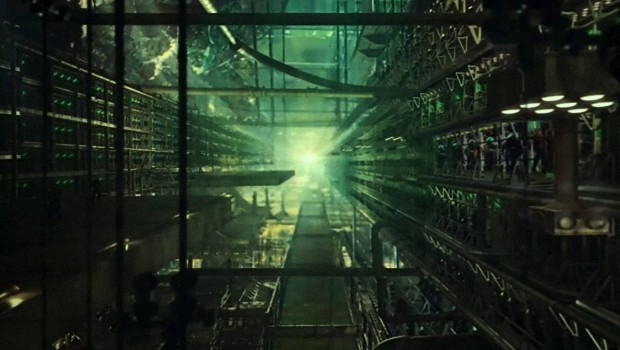
Genetic engineering in the Federation: a time for reflection
J’mai Osen questions the aversion to genetic engineering in the Federation scientific community.
Last week, I met an intelligent young Teplan scientist, recently emigrated from the Gamma Quadrant and on her way to the New Horizons Conference on Deluvia IV. As a child, she had been profoundly inspired by a Starfleet doctor who created a vaccine which eradicated a bio-weapon afflicting her planet. Her passion for furthering medical research and zeal to help others was matched only by her disbelief in the long-held, human-driven view of genetic engineering which dominates Federation science. Why, she asked, has this fundamentally vital area of research been all but suppressed by the Federation Science Council? In trying to formulate an answer that would satisfy her, I found myself asking why, indeed?
Dark Page in History
For those with little knowledge of Federation history, and you could be forgiven for that as there is quite a lot of it, the de facto ban on genetic research as a field and genetic engineering as a practice can trace its origins back to one of the Federation’s founding planets, Earth, during that world’s last great cataclysm, locally known as the Eugenics Wars.
To summarize, during Earth’s early nuclear period, a group of scientists working independently of the period’s governing authorities believed their world to be on a path to imminent destruction from which the only salvation was the field of “eugenics.” Their belief system, such as it was, lead them to reason that through the judicious application of genetic engineering to human DNA, they could artificially create a superior human specimen. That species, Homo superior, would unify their planet with benevolent and enlightened leadership, among other lofty aims.
Much like the man who wishes upon the monkey’s paw, they got their wish, but the cost was a holocaust beyond their wildest nightmares. The genetically engineered subjects did attempt to unify the planet, but they did so with the iron grip of tyrants. Their enhanced cognitive abilities allowed them to inflame a global conflict that ultimately set the stage for a large scale thermonuclear exchange, resulting in countless deaths and an Earth on the precipice of extinction.
In the aftermath of this conflict, the remaining nation states of Earth banded together to form the first nascent planetary government, and one of their very first edicts was a prohibition on the hateful technology which had nearly brought them all to ruin. Thankfully, Earth survived this dark chapter and much like the literary phoenix, rose from its own ashes to become the widely acknowledged utopia we know it as today. That said, a look past the idyllic trappings will show a world that still bears deep scars which even enlightened locals are somewhat loathe to acknowledge. Those scars, now almost three centuries old, are still a source of profound fear and inhibition. That inhibition has been spread, much like human culture itself, from one side of the Federation to the other and, with rare exceptions, has remained unchallenged ever since.
Forbidden Fruit
The very idea of a scientific field of pursuit being too inherently dangerous in and of itself is almost laughable when you consider some of the other technologies regularly exploited at the moment. We travel from star to star in ships driven by titanic energies. Citizens routinely have their bodies dismantled to their constituent atoms, digitized, energized, and then reassembled at some distant point for no purpose other than to save themselves a long walk. Even now, you’re reading this article after it has been transmitted through, not what we’d consider “normal” space, but a layer of the universe known as subspace.
When did these technological breakthroughs become routine, when they themselves have regularly been used as horrific weapons? How have we as a culture become so blasé to their use but remained so ardent in our opposition to genetic engineering? Does that not smack of hypocrisy, something our Federation insists it has grown beyond?
As I struggled to explain this inconsistency, the Telpan scientist merely smiled, as one does when explaining complicated subjects to a child. As we said our goodbyes, she politely asked if she could share something. It was a copy of the personnel file of the doctor who had saved her people from an unending torment. Contrary to Federation law, his parents had his genes re-sequenced as a child so that he might become something greater than what he was. He didn’t become a tyrant or a dictator, nor did he raze cities and enslave the weak. He became a healer whose name is spoken with reverence on a distant world, and a brief look at his career shows that it is just one of the many places his talent has touched for the better.
I cannot and will not suggest that each and every example of genetic re-sequencing would produce such noble, or ignoble, ends. That said, given the multitude of challenges faced by the Federation from within and without, can we continue to stubbornly hang on to prejudices of the ancient past? Can we continue to call our reticence anything other than cowardice?
It is far past time to reflect and reassess.
- Pakled Political Party announces candidacy for Federation Presidentship - 239807.16
- Outbreak of Kamaraazite Flu on Castal I, Sparking Anti-Talarian Sentiment - 239712.04
- Changeling Infiltration Alert Canceled, Starfleet Academy Halloween Event Blamed - 239711.20
- Genetic engineering in the Federation: a time for reflection - 239606.03
- The Hive Mind: A Rebuttal for the Rational - 239602.11


 Previous Article
Previous Article Next Article
Next Article Ripples in the Pond – The Consequences of Time Travel
Ripples in the Pond – The Consequences of Time Travel  Amity, the Federation, and Moral Cowardice
Amity, the Federation, and Moral Cowardice  The “hive mind” of the Federation and the Borg: Are they similar to one another?
The “hive mind” of the Federation and the Borg: Are they similar to one another?  The Hive Mind: A Rebuttal for the Rational
The Hive Mind: A Rebuttal for the Rational  The Trouble with the Klingon Empire, Part 2
The Trouble with the Klingon Empire, Part 2  Say It Out Loud – Reconsidering the value of verbal communication
Say It Out Loud – Reconsidering the value of verbal communication  Starfleet’s Evolving Mission in the Beta Quadrant
Starfleet’s Evolving Mission in the Beta Quadrant  Starfleet Scientists Hold Holo-Conference at New Horizons
Starfleet Scientists Hold Holo-Conference at New Horizons